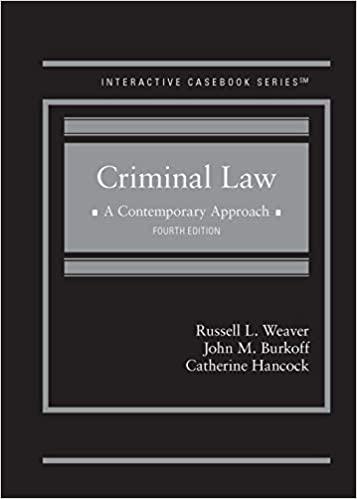Question
(Post-employment issues) Unlike workers' compensation, the unemployment system in California is fault-based; it punishes the party responsible for the employment separation. When an employee is
(Post-employment issues)
- Unlike workers' compensation, the unemploymentsystem in California is fault-based; it punishes the party responsible for the employment separation.
- When an employee is "separated or terminated" from employment in California, what is the standard for whether or not the employee is entitled to unemployment benefits?
- Can an employee in California receive unemployment benefits for voluntarily quitting a job? If so, in which instances?
- Employers can become concerned when employees leave their employment for a variety of reasons. One of those reasons is that the employee may have acquired confidential, inside information about the employer, which may involve trade secrets.Employers are obviously concerned about this information being shared and desire to protect such information.
- What types of things are considered trade secrets?
- Employers, at times, would like to restrict employees from going to work for a competitor. In California, can an employer legally enforce an anti-competition agreement? (preventing an employee from working for a competitor or directly competing with the former employer once they leave the company). Provide a source for you answer.
- What would you recommend to an employer in California concerned about protecting its' trade secrets? What would be the best legal tool to do so, and what are some of the things an employer should put in such a document?
3. Employers often are concerned about what employees post in their personal blogs, especially if that information may negatively impact the company.
a. What steps would you suggest an employer take to address this concern?
b. What are the legal issues involved here?In other words, what would be the possible employee legal arguments to be able to continue to blog, and what would be the employer arguments to restrict the blog?
4. And now for your last case!Review the Gardner v. Loomis Armored, Inc. case.
(Week 15 folder).
a. Make an argument as to why the majority opinion is correct.
b. Make an argument as to why the dissenting opinion is correct.
c. Which opinion do you personally feel is correct?
Step by Step Solution
There are 3 Steps involved in it
Step: 1

Get Instant Access to Expert-Tailored Solutions
See step-by-step solutions with expert insights and AI powered tools for academic success
Step: 2

Step: 3

Ace Your Homework with AI
Get the answers you need in no time with our AI-driven, step-by-step assistance
Get Started


